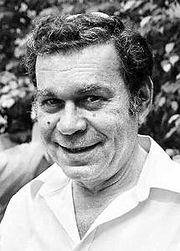Critical-Chain Approach
Critical Chain Project Management (CCPM) is a methodology for planning, executing and managing projects. The focus is on the project schedule and to reduce project changes and cost overruns by taking into account resource allocations and time uncertainties of activities.
The method was developed by an Israeli physicist, Eliyahu M. Goldratt, who introduced it in his Theory of Constraint (TOC) book “Critical Chain” in1997, which later became the foundation of CCPM. It was developed to reengineer the project planning and management practices in order to eliminate common issues and problems that can lead to poor project results, such as increased cost, fewer deliverables than expected and frequently missed deadlines due to longer than expected durations of activities.
CCPM differs from other traditional project planning methods that have its origin in critical path and PERT algorithms in several ways. The emphasis is on resources available, flexible starting times, interim milestones in projects and the use of resource-, feeding- and project- buffers but not order of tasks and strict schedules. The CCPM attempts to level out the resources available where a switch between project tasks are often needed to make sure the project is on schedule.
The focus of this article is to introduce and explain the background and concept of the CCPM approach when planning and scheduling a project together with benefits and limitations of the method. Undesired effects of more traditional planning and scheduling methods will be discussed, followed by how to prevent these effects by using the CCPM approach.
Contents |
The Author and the history

Author
Eliyahu M. Goldratt (1947 – 29111) was born in Israel and over his life he worked as a lecturer, researcher, scientists, and a business leader. Goldratt completed a Master of Science and a Doctors degree in Philosophy both obtained at Bar-Ilan University in Israel [1].
He is known for developing the groundbreaking Theory of Constraints (TOC), which he introduced in his book “Critical Chain” in 1997. The book reveals the reasons for why projects are unable to finish on time or within budget. In response to that, the TOC method was introduced [2] . This method reengineers the project planning and management practices in order to eliminate issues and problems that lead to poor project results. In addition he is the innovator behind several TOC tools such as “the thinking process”, “drum-buffer-rope” and the “Critical Chain Project Management” (CCPM) [1].
History
The importance of projects in today’s global and chaotic environment is becoming significant and will continue to grow in the future. All businesses have projects and they are turning to project management as a way to improve project results in order to stay ahead of the competition. Despite of precise planning and strict schedules through PERT/CPM approaches, lack of efficiency in project management has been a big issue in the last decades. The Theory of Constraints approach (TOC) to project management strives to eliminate this lack of efficiency by using the Critical Chain method when planning, scheduling and monitoring projects [3].
It all started with Eliyahu Goldratt’s first book, “The Goal”, a non-traditional approach to share knowledge. The book is a business textbook written in a novel form, disguised as a love story and tells a story of a manager in problems due to his poorly run manufacturing plant [1]. According to Goldratt, interdependency of elements influences the ability of businesses to do what should be done and that manufacturing plants can be controlled by three main measures; throughput (TH), operating expenses and inventory. Based on this, he described the Drum-Buffer-Robe (DRB) approach, which is to produce only what is needed. In his second book “It’s not Luck” he extended this method for marketing and distribution and the method became what is known as Theory of Constraint (TOC). In his third book “The Critical Chain” he applied the TOC method to Project Management and this method is now know as Critical Chain Project Management (CCPM) [3].
Traditional approaches
Theory of Constraints
The concept of Critical Chain Approach
Planning
Execution
Control
Benefits
Limitations
Conclusion
References
- ↑ 1.0 1.1 1.2 Van Vliet, V.(2011) "Eliyahu Goldratt.", Retrieved on 11 September 2016 from http://www.toolshero.com/toolsheroes/eliyahu-goldratt/
- ↑ TOC Goldratt.(2011) " Biography of Dr. Eliyahu M. Goldratt.", Retrieved on 11 September 2016 from https://www.toc-goldratt.com/tocweekly/biography-of-dr-eliyahu-m-goldratt/
- ↑ 3.0 3.1 Abreu, A., & Correia, F.(2012) "An overview of Critical Chain applied to Project Management.”, Retrieved on 11 September 2016 from http://www.wseas.us/e-library/conferences/2011/Barcelona/MEQAPS/MEQAPS-45.pdf